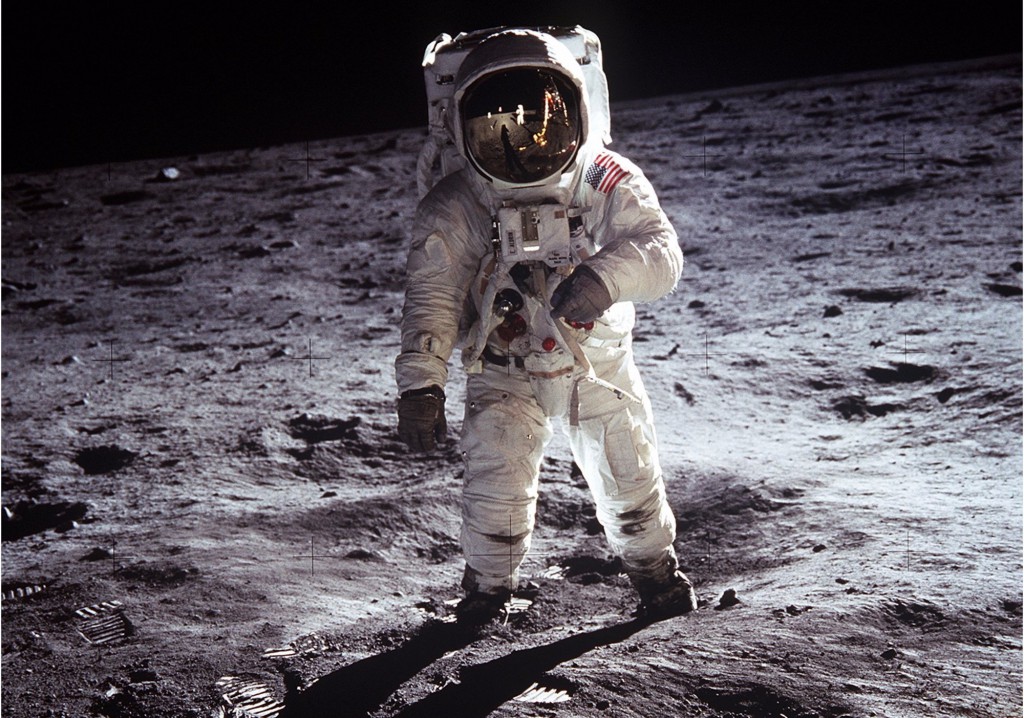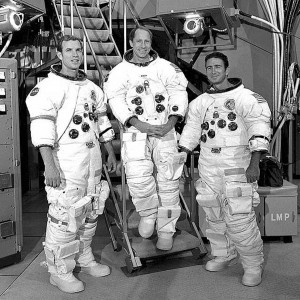What “First Man” Gets Fabulously Right About NASA: An Interview with Apollo 15 Astronaut Al Worden
Posted on Categories Discover Magazine
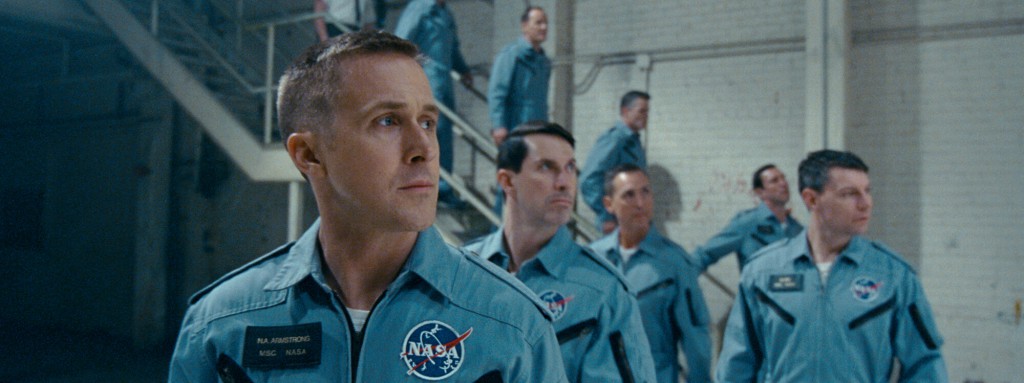
First Man is not like other movies about the space race, and I mean that in a very good way.
I’ll admit, I was skeptical about the director of La La Land telling the story of Neil Armstrong’s historic landing on the Moon. (Would there be songs? A scowling J.K. Simmons?) It turns out to be a synergistic pairing of artist and material. First Man brushes aside the expected saga of space cowboys saddling up their steel horses, delivering instead a moving narrative of NASA’s glory days as seen through Armstrong’s eyes.
That’s an especially impressive achievement given Armstrong’s famously private and controlled personality. Director Damien Chazelle and actor Ryan Gosling (as Armstrong) use that reticence to their advantage, examining the personal, emotional, and intellectual rigor that made the Apollo 11 triumph possible. It all adds up to a nerve-wracking and fabulously engrossing story, but at times I wondered how closely it aligned with reality. So I spoke with Al Worden, the Command Module pilot on Apollo 15, who knew Armstrong and also served as a technical advisor on the film. Worden strongly validated the authenticity of First Man. He also offered a lot of unexpected insights along the way.
A lightly edited version of our conversation follows. It’s longer than my usual column, but I think you’ll find it well worth your time.
What your relationship was with Neil Armstrong like? I notice that he does not play a big role in your memoir, Falling to Earth.
Al Worden: I would say that Neil and I were good friends. I wasn’t his closest friend; I was so much further along in the [NASA] program that we really didn’t mingle much back then, but I got to know Neil afterwards. I think part of the reason we became friends was that I didn’t bug him.
Everybody was after Neil for something. When I was chairman of the Astronaut Scholarship Foundation, I wrote him a letter saying that we could really use his help to raise money. He wrote back, “I can’t do it because I’m spending all my time raising money for Purdue, but I appreciate your letter,” and so on. I wrote back and said, “That’s fine, I just wanted to know where you stood, I will never bother you again.” And I never did. After that we became pretty good friends, because I didn’t bug him. That’s the kind of guy he was.
First Man presents Neil almost as a Greta Garbo-like figure in the way he guarded his privacy. Was that a reasonable reaction to the media frenzy around the first Moon landing?
Oh yeah, absolutely. He was being pounded from all sides by everybody who wanted something from Neil Armstrong. He had to be very careful what he did. He took a page from Charles Lindbergh’s book and kind of lived his life the way Lindbergh did, stayed out of the limelight. When he went out to do something, it was for something that was very important to him or to the country. I don’t think Neil ever marketed himself at all. He didn’t need to. Everybody knew who he was.
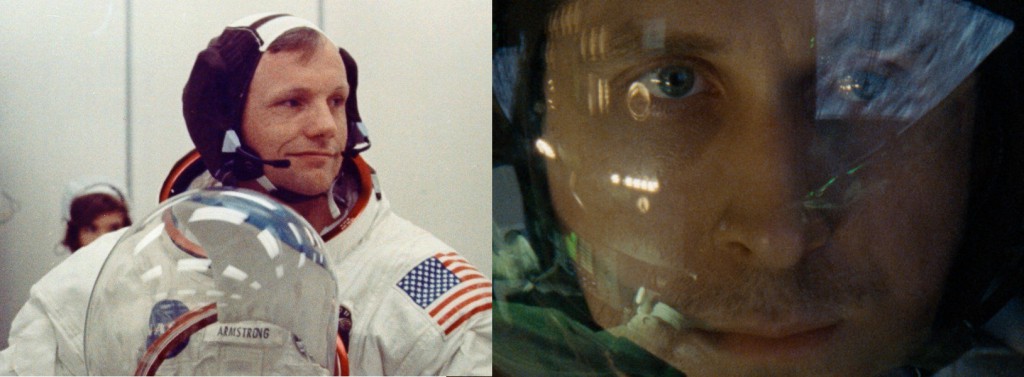
The real Neil (left), suiting up for Apollo 11 on July 16, 1969; the movie Neil (right) gets his closeup. (Credit: NASA, Universal)
How well did Ryan Gosling capture what Neil Armstrong was really like in person?
Ryan did a superb job. In the movie, they make Neil a little more aloof than maybe he really was, but that’s a very fine line. It all depends on your perspective, on whether you knew him or not, on how you saw him. I wouldn’t say that Neil was aloof, but he was very self-contained—put it that way. If he had a problem, he didn’t expose everybody else to his problem.
Like in the movie, when he parachutes out of the LLTV [the Lunar Landing Training Vehicle, a test version of the Apollo Lunar Module, which Neil crashed], he didn’t even tell his wife. He just went back to the office started working. That’s the kind of guy he was. He didn’t let those kind of things run his life. He just kept plodding along and doing the right thing. He was very unusual that way. With Gemini 8, when he hit all the problems [the spacecraft entered a near-fatal spin during a docking test], I don’t think he talked with anybody about that except to explain to the people at NASA what went wrong and what needed to be done. Outside of that, he was back in his office, figuring out other things. That was Neil.
Was Neil’s reserved style frustrating to the PR people at NASA? Would they have preferred more of a cheerleader?
I don’t know. See, Neil was kind of an icon even when he was still in the program because he had been involved in situations that could have killed him. He walked through them and hardly ever blinked an eye. He was kind of a special guy even in the program.
Is that why Neil ended up as the first person to walk on the Moon?
People ask me about that, and I say it was kind of coincidental. You see, all of the crews for Apollos 10, 11, 12 ,13 were already picked and in their slots. Apollo 10 was the first flight around the Moon with the Lunar Module, setting up the stage to make a landing. Back in Houston, I don’t think we ever considered that Neil would actually be the guy to make the first landing, because the first time you try something like that something is bound to go wrong and you can’t make it. You got to get over whatever went wrong, fix it, and then the next up would be the guy to make it.
We were kind of betting on Pete Conrad [who ended up on Apollo 12] making the first landing. But Neil overcame all that [the initial failure to find a suitable landing suite for his Lunar Module], took over manually, and landed that thing. He did what he had to do.
Were there any places where First Man took artistic liberties with the Neil Armstrong’s life?
I’m not sure there is any fictionalized part of the story. It follows Jim Hansen’s book [also called First Man] pretty religiously, other than maybe portraying Neil as a little more aloof than he really was. I don’t know the inner workings between Neil and [his wife] Jan and the family; I wasn’t privy to that. What I got from the movie, and what I related to in Neil as a person, is that he was very dedicated and persevering in following his path, from flying the X-15 to the Gemini program to the Apollo program. He had his ups and downs, and of course he lost his daughter—that affected him greatly. If there is a difference between how the movie portrays him and what he really was, it’s very very small.
What about the closing scene with the bracelet? I’m pretty sure that was fictionalized. Right? [For spoiler reasons, I won’t say anything more about it.]
I can’t answer that. That is something that I just I just don’t know about, but I don’t believe it actually happened. I don’t think Neil took anything like that personally on the [Apollo 11] flight.
How about the broader depiction of astronaut culture of the 1960s? Did that ring true?
Yeah, that was all pretty good. There have been a lot of movies made about the [NASA astronaut] guys. You have to separate this one out, because First Man is not a story about space flight. It’s a story about a man, and space is kind of tangential to the real story. Apollo 13 was all about the flight. There were parts of a Apollo 13 that I didn’t like because it wasn’t real. They made Jack Swigert look very guilty of causing the problem, and he wasn’t. He had nothing to do with it. I objected to that strongly. I did not think that was very fair. But by that time Jack had already died—so who cares? I remember asking Ron Howard why he did that, and he said it was for the audience. He had to put something in there to keep the audience’s interest.
Or I go back to The Right Stuff. The book that Tom Wolfe wrote was very different from the movie that they made out of it. I loved the book, and I knew Tom; I used to see him all the time. When they made the movie, they changed a lot of things. They made it kind of charade, a parody of what things were really like. Like the scene where Gordon Cooper is driving [his wife] Trudy in a convertible back to Edwards and keeps asking her, “Who is the greatest pilot in the world?” Well come on! That’s movie nonsense. They did a whole scene at the Lovelace Clinic, and the way they portrayed it, that’s nonsense also.
So history does get rewritten in some of these movies, but First Man is pretty true to the book. It’s pretty much the way it was. I think Ryan Gosling played it perfectly. And Damien—for a guy as young as he is, he did a fabulous job on First Man.
What kind of advice did you give to the filmmakers to keep things accurate?
They asked me to come to Atlanta while they were doing their stuff is a studio, and out in the field where they had converted an old stone quarry to a lunar surface. What I did, it was kind of like: Jim Hansen talks about the characters and about the men and about what they do—but then there are a lot of mechanical details that never appear in the book. For instance, you take for granted that there is an instrument panel, that there are three couches, and there’s a hatch, and all that. When you make a movie, you’ve got to show those things, and they’ve got to be right.
That’s where I came in. When they put the three astronauts in the spacecraft before launch, how do they get in? Who goes first? How do they strap them in? What kind of shoulder straps do they have? What kind of lap belts do they have? There has to be a transition from how you write the book to how you visually show these things to a movie audience. I helped them with those details.
Were you satisfied with the result?
They did a superb job. It was interesting comparing the inside-the-cockpit scenes in First Man to the inside-cockpit scenes in Apollo 13. In Apollo 13, Tom Hanks did most of those scenes in a zero-g airplane where they were actually floating around. Damien decided to do it with wires instead. We had all the guys wired up, and I was standing there laughing because I just couldn’t see how that would turn out to look like these guys were in freefall. Well, once they finished and you look at it, you say, “Oh my God. Yeah! That looks real!” The wires worked just as well as doing freefall. I found it fascinating.
First Man culminates with the first footsteps on the Moon, so I wanted to get your perspective as the other kind of lunar explorer—the one who stayed in orbit. When did you know that would be your role on Apollo 15, akin to Michael Collins’s role on Apollo 11?
We knew that very early on. When we had the [Apollo 1] fire at the Cape back in 1967, the emphasis was on the Command Module: fixing it and making sure that it was safe, putting a new hatch on it, taking all the flammable materials out of it. I probably knew more about the Command Module than anybody else in the program, so was kind of a foregone conclusion that if I got on a flight, it was going to be as Command Module pilot.
Were you disappointed when you realized you wouldn’t be walking on the Moon?
No, not at all. You have to understand what was going on in the program back then. I was on a professional career path to become a commander. In the [astronaut] program back in those days, generally speaking, the Command Module pilot was the one who would become a commander on a future flight. A Lunar Module pilot got to walk on the Moon but chances are, he was never going to become a commander. To me, I was in the right spot at the right time.
What’s happened since then is that once the media got into the act of showing all the videos and all the pictures of the guys on the surface, it became more important to the general public to see a guy walking on the Moon than to see some guy float around in orbit by himself. For the guy in orbit, there are no pictures, no videos, no nothing that show him, so he kind of gets lost in the shuffle. Mike Collins had the same problem on Apollo 11. It’s gotten to be a big deal about twelve guys walking on the Moon. Nobody ever mentions the six guys who were in lunar orbit.
But I didn’t mind it at all. It was such a different world back then in terms of career path than we have assumed through the media in the meantime. That was just the nature of the game.
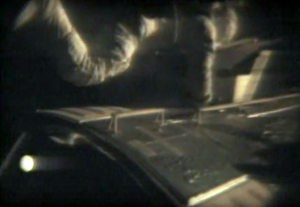
Al Worden carried out the most distant spacewalk ever–196,000 miles from Earth–during Apollo 15. (Credit: NASA)
What was that experience like, being the only human being in the universe in orbit around the Moon?
It’s pretty surreal. I thoroughly enjoyed it. I did a lot of visual observations, I did a lot of photography. I had a complete set of remote-sensing devices that I used to scan the lunar surface. I was very busy in lunar orbit, probably did a thousand times more science than they did on the surface. The guys who go down to the surface, they have one thing in mind. Their goal was to pick up every different color rock they can find and bring it back. In the meantime, I’m photographing 25 percent of the Moon’s surface! So there was there was a lot involved in what I did, but it wasn’t romantic like walking on the moon. I didn’t have the facilities with me to take any pictures inside. Well, I’m not a selfie kind of guy anyway.
The isolation was wonderful. I was raised in the Air Force as a single-seat fighter pilot, so I was used to being by myself. As a matter of fact, I preferred to be by myself, because I didn’t really want to be responsible for somebody else on the flight. I didn’t feel lonely. There’s a difference between being lonely and being alone; I was alone but I wasn’t lonely. The best part of the lunar flight for me in those three days [at the Moon] was when I was on the backside of the Moon, cut off from Houston mission control. I didn’t even have to talk to them. I was very comfortable there. I wrote a book of poetry about the flight back in the 1970s. It’s called Hello Earth.
The climactic scene of First Man reminds me of something that happened on your Apollo 15 mission, when Dave Scott placed the “Fallen Astronaut” statue on the Moon in memory of those who died in space exploration. Were you involved with that?
We talked about it in the crew, but I had nothing to do with the agreements made with Paul van Hoeydonck [the artist who created “Fallen Astronaut”]. Dave did that on his own. I knew about it and I knew we carried it on the flight, but I was not really involved. I got involved with Paul much later, because he had a falling out with Dave. There were a lot of things that happened, and I think a lot of people got disillusioned with Dave. Paul was one of them. [For a full account, see my article “The Sculpture on the Moon.”]
Paul’s a good friend and a talented artist. The guy’s like ninety five years old and going strong! He’s amazing. I have two of his art pieces in my house down in Florida. The memorial — the little Fallen Astronaut and the plaque that went with it listing all of those who died in space–I think it’s wonderful. As a matter of fact, Paul asked me to come to Berlin next April because there’s is going to be a big showing of his artwork. The Fallen Astronaut is going to be the centerpoint of that.
What do you see as the future of human space exploration? Are you encouraged by all the current activity in private spaceflight?
I gotta tell you, there is only one commercial operator out there. There are lots of companies that are working towards doing something in space, but there is really only commercial company doing it, and that’s Blue Origin. They’re the only one completely funded by the people in the company. Everybody else is relying on the government to pave the way. I keep thinking, what’s different about this than it was in the Apollo program when they paid North American to build the Command Module and they paid Grumman to build the Lunar Module? I don’t see a whole lot of difference, except that companies like SpaceX build their stuff without a lot of NASA oversight.
What’s your opinion about sending humans back to the Moon?
Going back to the Moon has only one value as far as I’m concerned, and that’s to put a crew there for a period of time to make sure we can live in a harsh environment like that–probably at the Moon’s south pole, where we think there’s water. The most spectacular thing we could do if we went back to the Moon would be to build the biggest radio telescope we could build on the lunar backside. I think that would be spectacular. It would give us a great shot at looking farther into the universe. Outside of that, I don’t see a whole lot of value in going back to the Moon. The Moon has no has no charm for me. If we’re going to Mars, there are better ways than going to the Moon first.
OK, so what would be your preferred path to Mars?
I happen to be a fan of Lagrange points, especially L5. A perfect place to launch to Mars. It’s in a stable equilibrium point. You could send all kinds of small packages up there and assemble it without fear of drifting into the atmosphere. You could build a huge, huge spacecraft to go to Mars and back. The Orion is a mistake in my mind. It can’t go to Mars, even though they sold it on the basis of going to Mars. The Orion is good for four people for 20 days.
Mars could take a year and a half, so they’re going to have to do a whole different thing. It’s going to be very difficult, because not only do you have a year and a half in space, but you’re going to run into radiation that we’re not even sure today we could handle. Going to the Moon didn’t have the same kind of radiation danger.

Armstrong nearly died during the May 1968 crash of his LLRV-1 training vehicle–but he brushed it off and went straight back to work. (Credit: NASA)
There was a special spirit at NASA in the 1960s. How do you compare it to what you see now?
In the days when I was in the program, it was very different than it is today in terms of the management, in terms of how decisions are made, in terms of the bureaucracy. We had a great program back then. There was no bureaucracy involved making decisions. Committees would talk over whatever had to be done and the chairman of the committee would then make a decision based on all that talk. We were all so goal-oriented that little problems along the way seemed pretty insignificant.
Neil Armstrong could work his way through all the problems that he had on the way to the lunar landing and still keep his mind on the ultimate goal, which was to land on the Moon. When the goal is so important, all those other things recede into the background. And I think that’s what made the program so successful back in those days. When we lost a crew in January of 1967, that didn’t stop the program. As a matter of fact, because we lost those three guys, it made that Apollo spacecraft safe enough so that every single flight after that was OK.
We found out some big problems that we had, got them corrected, and we kept on going–because the goal was so important.
